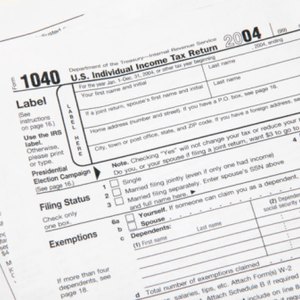
Landlords operate a business and, as such, have expenses and income related to that business. Income includes the rent payments that come in each month, while expenses can include repairs to community spaces or even upgrades to the interior of a rental unit. The good news is, landlords can deduct those unit-specific expenses on their taxes, but leasehold improvement depreciation requirements rely heavily on who pays for the repairs and how the payment is made.
Tax Treatment of Leasehold Improvements
Repairs and upgrades that fall under leasehold improvements can be paid for by either the landlord or the tenant, usually as outlined in the lease. If the landlord pays for the improvements, he can depreciate the cost of those modifications as a business expense. Like other expenditures, leasehold improvements are considered the cost of doing business.
If, on the other hand, the tenant makes the improvements and isn’t reimbursed for them, that tenant can enjoy the leasehold improvement depreciation that would have otherwise gone to the landlord. When the tenant moves out, if the depreciation hasn’t been fully claimed, the tenant can claim something called an abandonment loss for the remaining amount.
Depreciating Leasehold Improvements
The Tax Cuts and Jobs Act makes some changes when it comes to depreciating these expenses. You’ll find leasehold improvements under Internal Revenue Code Section 179, which relates to property depreciation. Under the new law, improvements made to the inside of the building that are nonstructural in nature can be depreciated over a 15-year period as long as they were made “after the building is originally placed in service.”
Previously, those improvements had to have been made after a building was at least three years old. That requirement has been waived under the TCJA, as has the restriction against claiming a leasehold improvement if the lease is between a tenant and landlord who are related. In other words, if you rent an apartment from your sister and your sister makes improvements to the space, she can depreciate that expense.
Taxability of Landlord-Paid Improvements
In some cases, landlords issue a cash allowance to a tenant to cover the cost of approved improvements. Although the landlord can deduct the expense as long as it meets standards for leasehold improvements under Section 179, the tenant now has a taxable event. In this case, though, the landlord would claim this expense as a lease acquisition cost, which he could then amortize, with other lease acquisition costs, over the course of the lease.
For the tenant, on the other hand, this cash allowance triggers a need to look into the tax treatment of leasehold improvements. The allowance provided to the tenant is considered taxable income and must be claimed along with other income that year. The landlord would only be able to claim the amount of the allowance the tenant used on improvements, so that landlord will have a vested interest in documenting the changes that were made and how much they cost.
Improvements in Lieu of Rent
Another option that can complicate the tax treatment of leasehold improvements is when rent is involved in how improvements are handled. If the improvements are made with the agreement that the tenant pays for the improvements instead of rent during a particular timeframe, the landlord will need to take the leasehold improvement depreciation as an asset.
In some cases, the improvements are specific to the tenant moving in. As part of the lease negotiation, for instance, a landlord may have agreed to paint the unit or replace some bad flooring. In this case, the leasehold improvements Section 179 recognizes that the landlord won’t benefit from those improvements after that particular tenant moves out. The Internal Revenue Service allows landlords to then deduct the remaining tax basis.
References
- PlanteMoran: Tax Treatment of Tenant Improvements: Who Should Make Them — Landlord or Tenant?
- Accounting Today: Common Depreciation Missteps and Misconceptions: Qualified Leasehold Improvements
- IRS.gov: New Rules and Limitations for Depreciation and Expensing Under the Tax Cuts and Jobs Act
- Withum: Tax Treatment of Leasehold Improvements When Paid by Lessee vs Lessor
- Internal Revenue Service. "New Rules and Limitations For Depreciation and Expensing Under the Tax Cuts and Jobs Act." Accessed April 30, 2020.
Writer Bio
Stephanie Faris has written about finance for entrepreneurs and marketing firms since 2013. She spent nearly a year as a ghostwriter for a credit card processing service and has ghostwritten about finance for numerous marketing firms and entrepreneurs. Her work has appeared on The Motley Fool, MoneyGeek, Ecommerce Insiders, GoBankingRates, and ThriveBy30.
